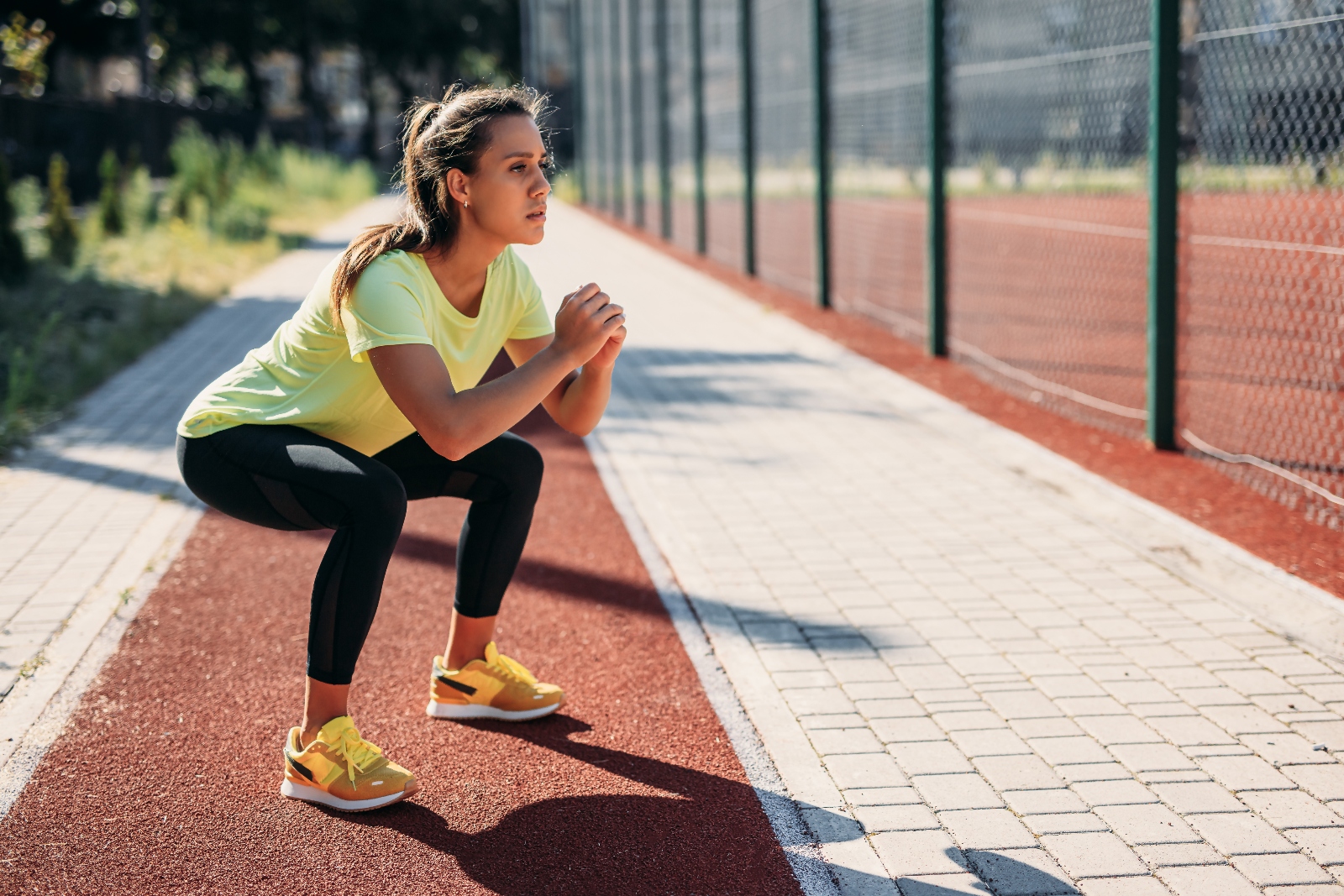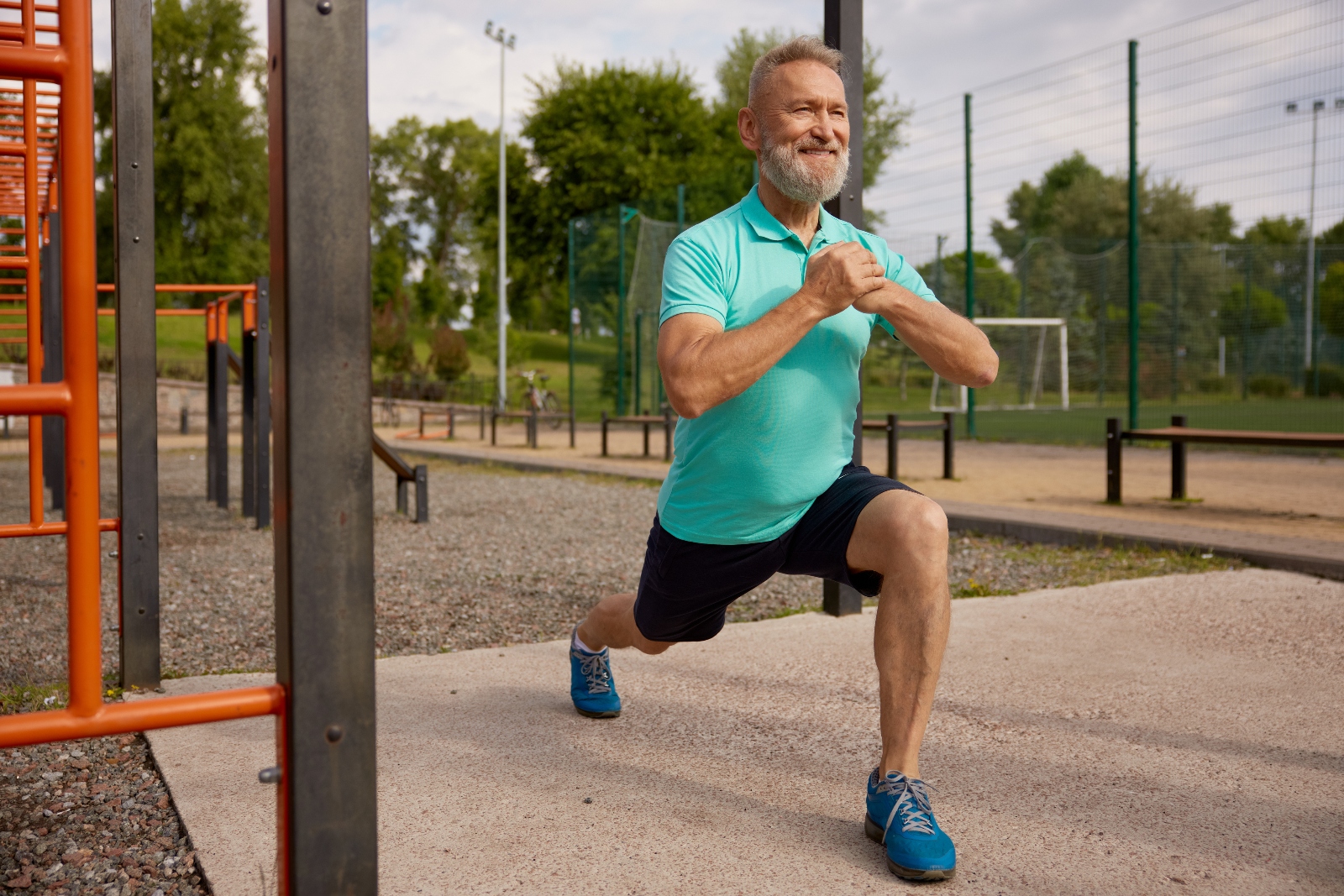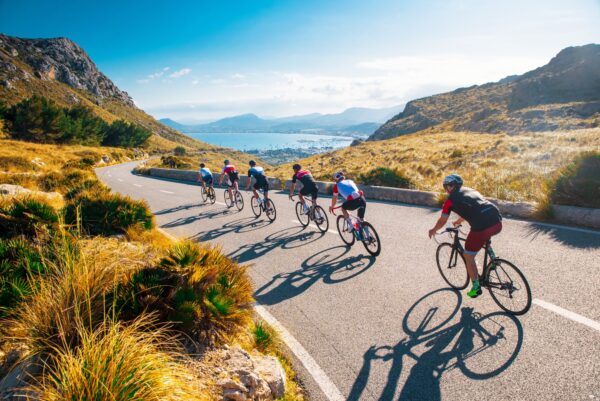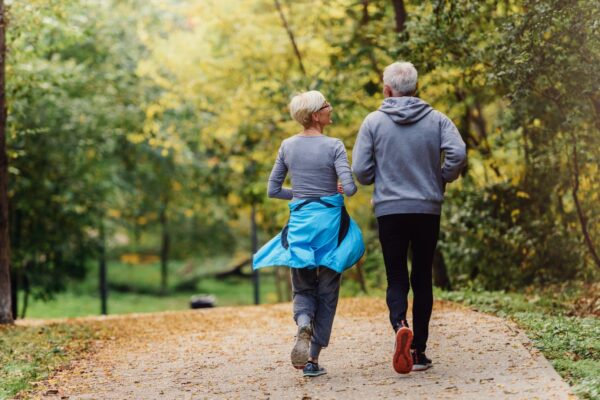Every year, tens of thousands of runners compete in running races around the UK, each hoping to achieve their own personal targets – whether that’s a personal best, a fundraising goal or simply crossing the finish line.
Completing a race requires pushing your body to the limit. Nevertheless, avoiding injuries such as runner’s knee will be at the forefront of every participant’s mind during their training as they prepare for upcoming races.
One of the best ways to reduce the risk of knee injuries ahead of a race is to always complete the appropriate warm-up and cool-down exercises and stretches.
Runner’s knee is a common condition, but if you are already suffering from it, it doesn’t have to mean your race is over before you reach the start line. Read on to explore insights from our physiotherapists on the best exercises for runners to prevent knee injury, as well as the exercises that can be used to combat the symptoms of runner’s knee and manage the condition more effectively.
See an expert physiotherapist
If you’re struggling with knee pain linked to running, contact our team of expert physiotherapists for a private appointment.
Receive advice tailored to your training needs and learn which exercises will benefit you the most.
What is runner’s knee?
Runner’s knee, otherwise known as patellofemoral joint pain, is a broad term that is used to describe pain in the knee joint, rather than a specific type of injury.
Despite its name, the condition is not only experienced by runners.
What causes runner’s knee?
There are a few different issues that could cause you to develop runner’s knee. They include but aren’t limited to:
- overuse: if you’ve been training very hard and/or doing lots of exercises that you are not used to completing, it could cause irritation to the tissues in and around your kneecap.
- a blunt force trauma to the knee: a fall or a collision can impact the knee and cause an injury.
- pressure on the knee: problems with your feet can affect the way that you walk and, as a result, put excess pressure on your knee.
Strengthening exercises, when completed correctly, can help reduce pain associated with runner’s knee.
What are the symptoms of runner’s knee?
The main symptom of runner’s knee is pain in and around the kneecap. It usually affects the very front of the knee but can also go around it or behind it.
The pain usually gets worse when you are bending and straightening your knee, such as when you go upstairs, bend down or sit with your knees bent, as well as when you put weight through the knee joint.
Knee exercises for runners
If you are a runner or you’ve had problems with your knee in the past, you’ll almost certainly have explored treatment options such as icing your knee, using non-steroidal anti-inflammatory pain relief (such as ibuprofen), and using splints and straps to support it.
However, they aren’t the only treatments available. There are a variety of exercises that our physiotherapists recommend that will help strengthen the knee and prevent the risk of further injury. Please note, you should always consult a healthcare professional before beginning exercise if you have a pre-existing injury.
The knee strengthening exercises that we recommend are designed to strengthen each of the muscles that support your knee. We recommend that you complete them alongside your running programme but on a different day than your runs to aid recovery and optimum muscle growth.
Contrary to popular belief, you do not need to stretch out or foam roll your iliotibial band (or ITB), which is a strong, thick band of tissue called a tendon that runs from your pelvic bone to your knee.
Studies have shown that the ITB requires an excessive force, approximately 2000lbs, to lengthen it by 1%. This is obviously far beyond the human physiological range.
1. Squats
When doing squats, your technique is important to make sure that you are targeting the correct muscle groups and optimising muscle growth.
To do a squat, stand with your feet roughly shoulder-width apart and pointing slightly outwards at a comfortable angle. Rest your arms by your sides, across your chest or you can stretch them out in front of you instead.
Imagine that you are sitting down to a chair. Lower yourself by slowly bending your knees. If you find them difficult to begin with, start by standing up and down from a chair.
You should aim to do 3 sets of 8-12 repetitions, but it’s okay to build up to this if you aren’t able to do so many straight away.
Once you can complete 3 sets of 12 repetitions, you can add additional resistance in the form of weights at the gym, wearing a rucksack or holding a shopping bag at home.

2. Lunges
A lunge is another good exercise for building strength in the knees as well as all of the other muscles in the leg.
To do a lunge, stand in a split stance with your right leg in front of you, and your left leg behind you. Lower your back knee down until it is just off the floor. Then, push back up to your starting position.
You should aim to do 3 sets of 8-12 repetitions on each leg, but don’t worry if you have to begin at a lower number initially.
If you find a lunge easy, you can make it harder by adding additional weight in the form of holding weights at the gym, wearing a rucksack, or holding a shopping bag at home.
To progress this exercise further, you can elevate your back foot by putting it on a chair behind you. This will bias your front leg more whilst also challenging your balance so do hold onto something stable to begin with whilst building your confidence and balance.

Stretching can be a useful tool if used correctly. Before your run, a warm-up of dynamic movements can help get the muscles firing and warmed-up. Examples include high knees, heel flicks, star jumps.
Static stretching can be helpful as part of your cool-down after your run, however we would advise against completing it before your run.
Some examples of static stretching are:
3. Standing quad stretch
You are probably already familiar with a standing quad stretch, which stretches the quadriceps – the front of the thigh muscles. This simple stretch requires you to stand near a wall or other sturdy support.
Once in position, grasp your ankle and gently pull your heel up and behind you until you feel the muscle in the front of your thigh stretch. Keep your back straight and push your hips forward. Hold the position for 30 seconds and then lower your leg. Repeat with the other leg. Complete once after your run.
4. Hamstring stretch
Hamstring stretches can help improve the strength and control of both your knee and hip joints. There are a few different ways of doing hamstring stretches, but a wall hamstring stretch is one of the most gentle and effective methods.
Lie on your back in or by a doorway. Slide the leg you want to stretch up the wall until it is almost perfectly straight. Hold this position for 30 seconds before releasing. Then switch to the other leg.
You should aim to do this 3 times with each leg when you warm up/cool down.
5. Standing calf stretch
A standing calf stretch can help prevent an Achilles tendon rupture as well as strengthen the muscles in your calf and your knee.
Stand at arm’s length from a wall or sturdy support. Put your palms flat against it/hold on to it and keep one leg back with your knee straight and your heel flat on the floor. Slowly bend your elbows and front knee, moving your hips forward until you feel a stretch in your calf. Hold the position for between 30 and 60 seconds, depending on what you feel comfortable with. Then switch legs and repeat.
Book an appointment with our physiotherapy team today
Your body is full of soft tissue including muscles, tendons and ligaments, all of which can be affected by overuse, injury or illness. Whether you are suffering from runner’s knee, or you have any other type of exercise injury or problem affecting your musculoskeletal system, our dedicated physiotherapy team can help.
Highly experienced in the diagnosis, treatment and management of musculoskeletal conditions, our team delivers the highest standards of physiotherapy care across services such as private hydrotherapy sessions, shockwave (ESWT) treatment, acupuncture, joint mobilisation and soft tissue massage therapies.
Our state-of-the-art facilities include:
- a large, well-equipped gym
- cardiovascular training equipment
- agility ladders
- plyometric boxes
- hydrotherapy pools
Get exceptional quality of care in state-of-the-art surroundings with our physiotherapists.


